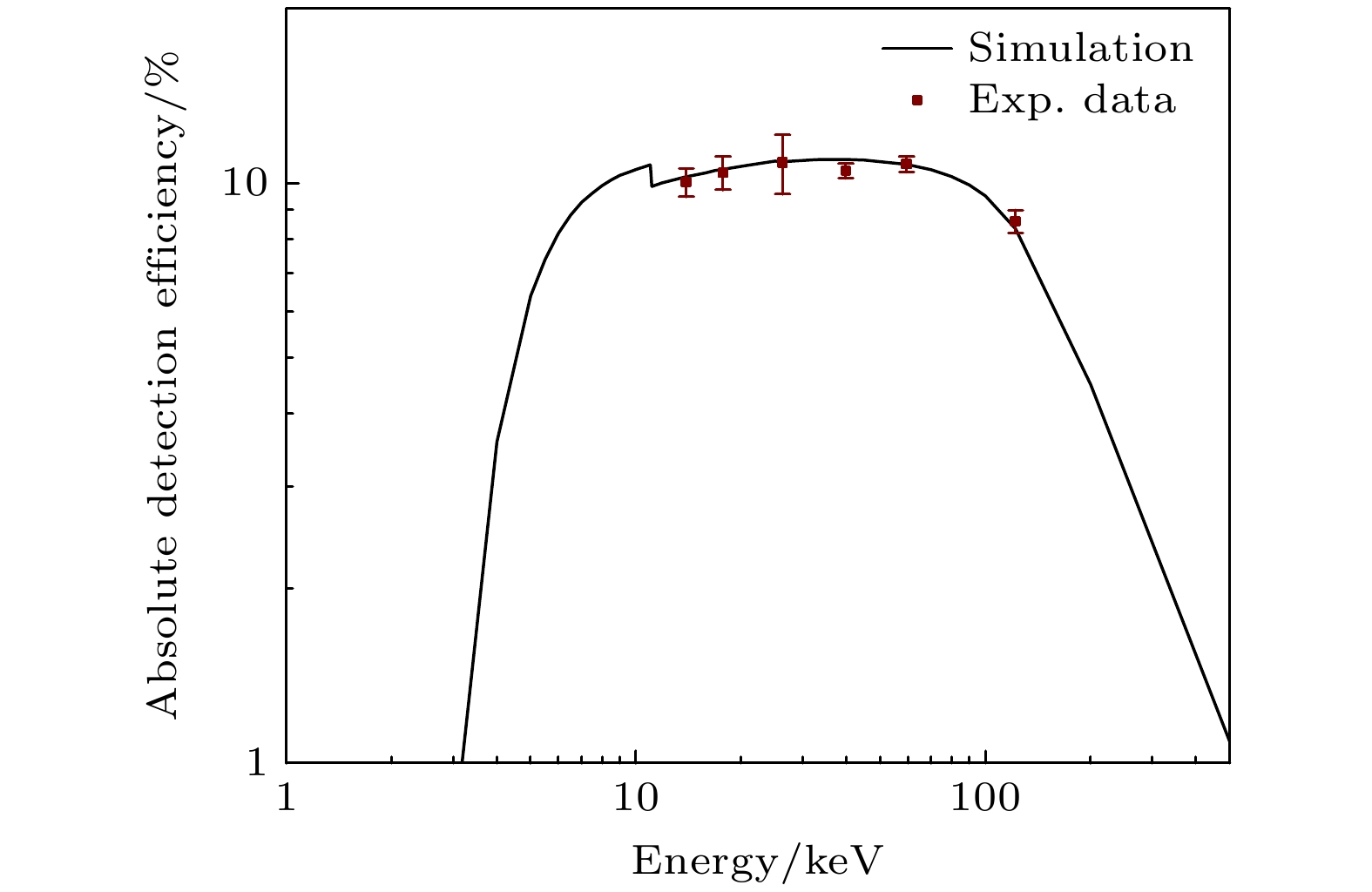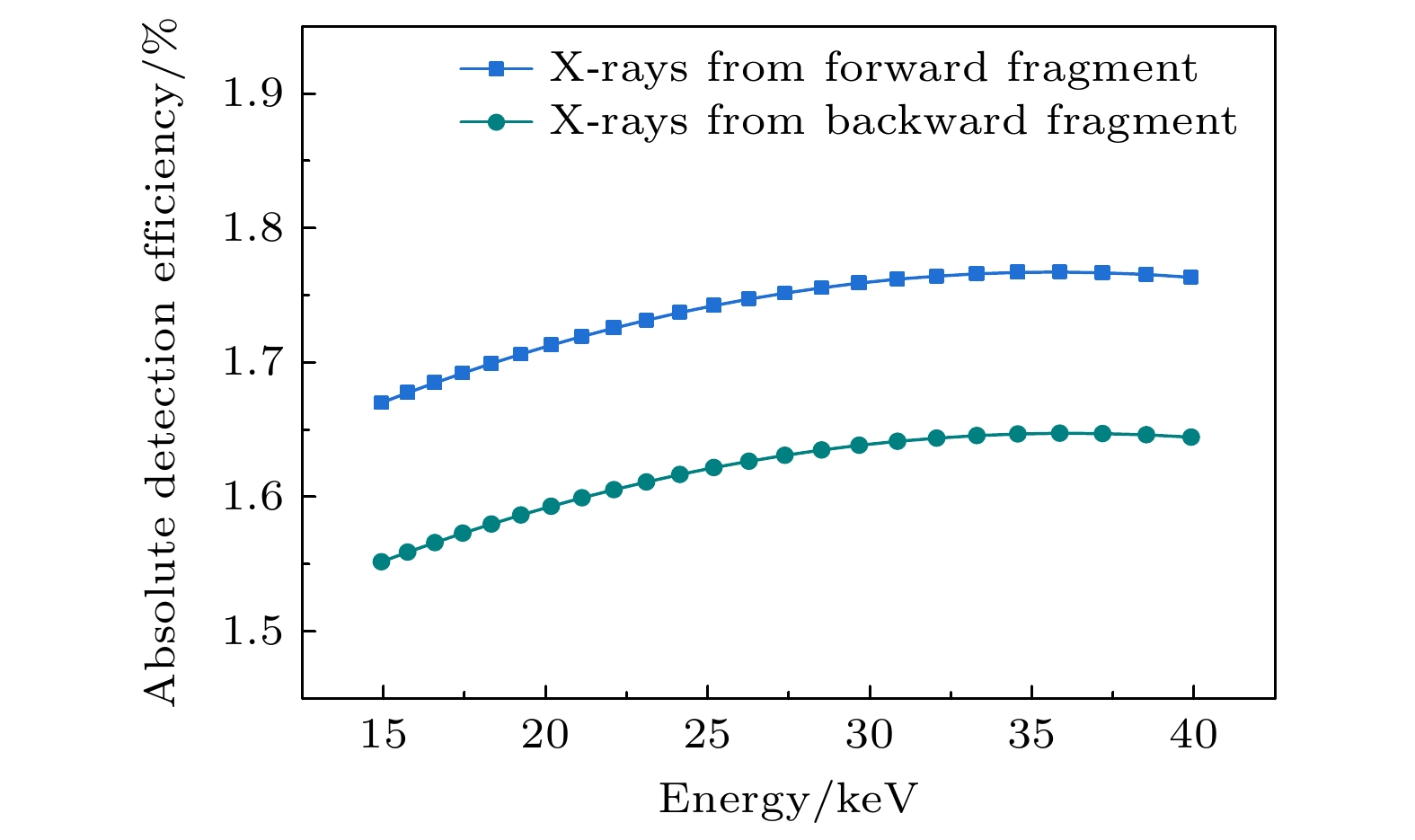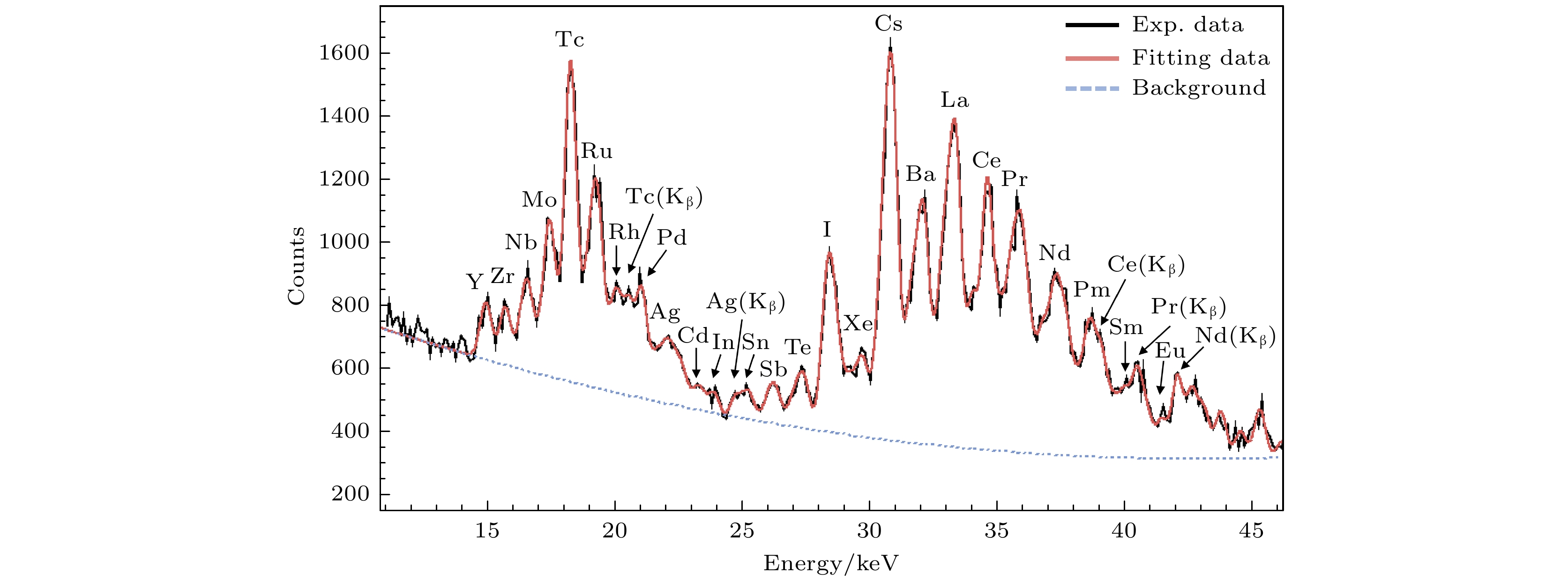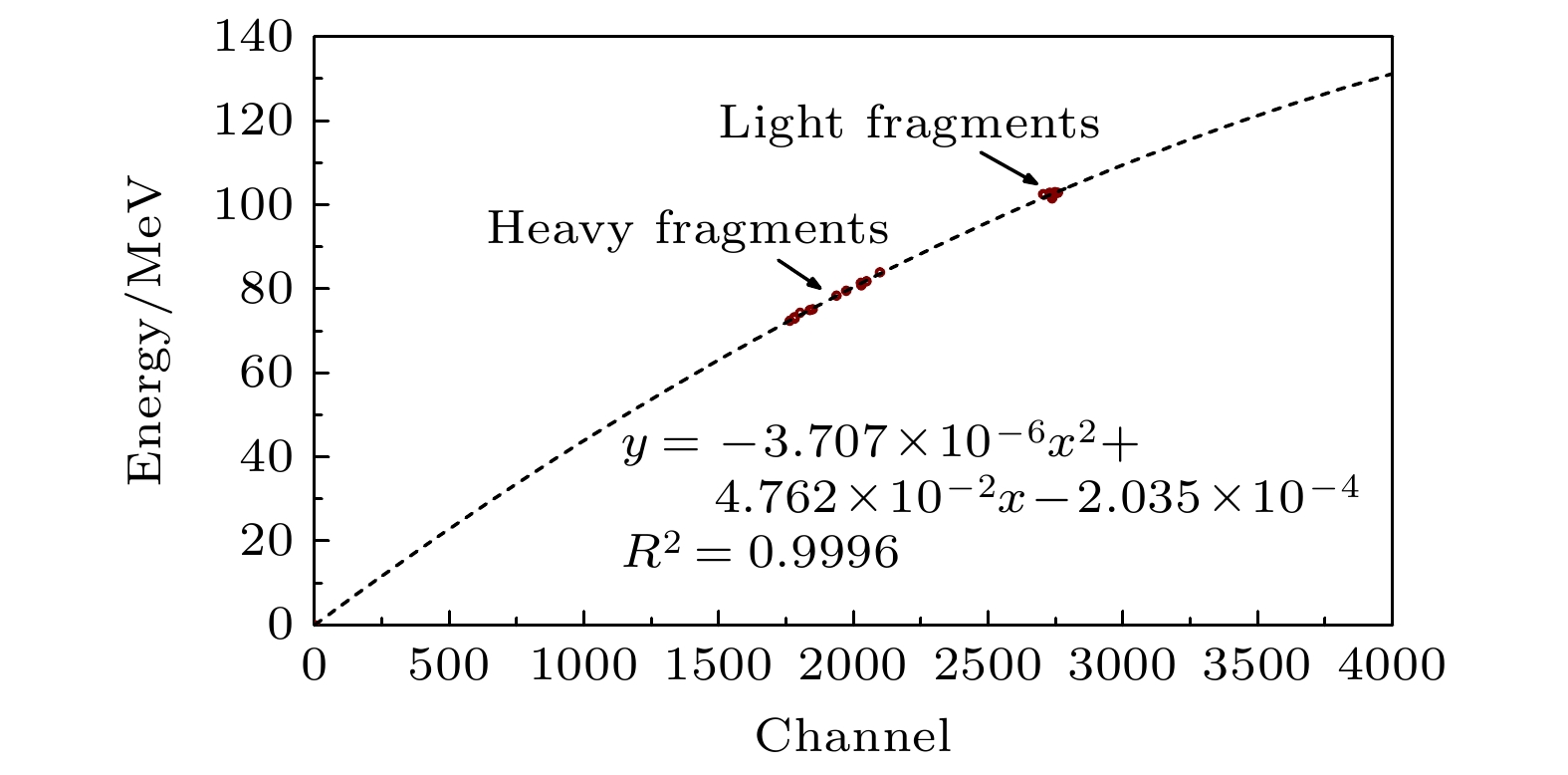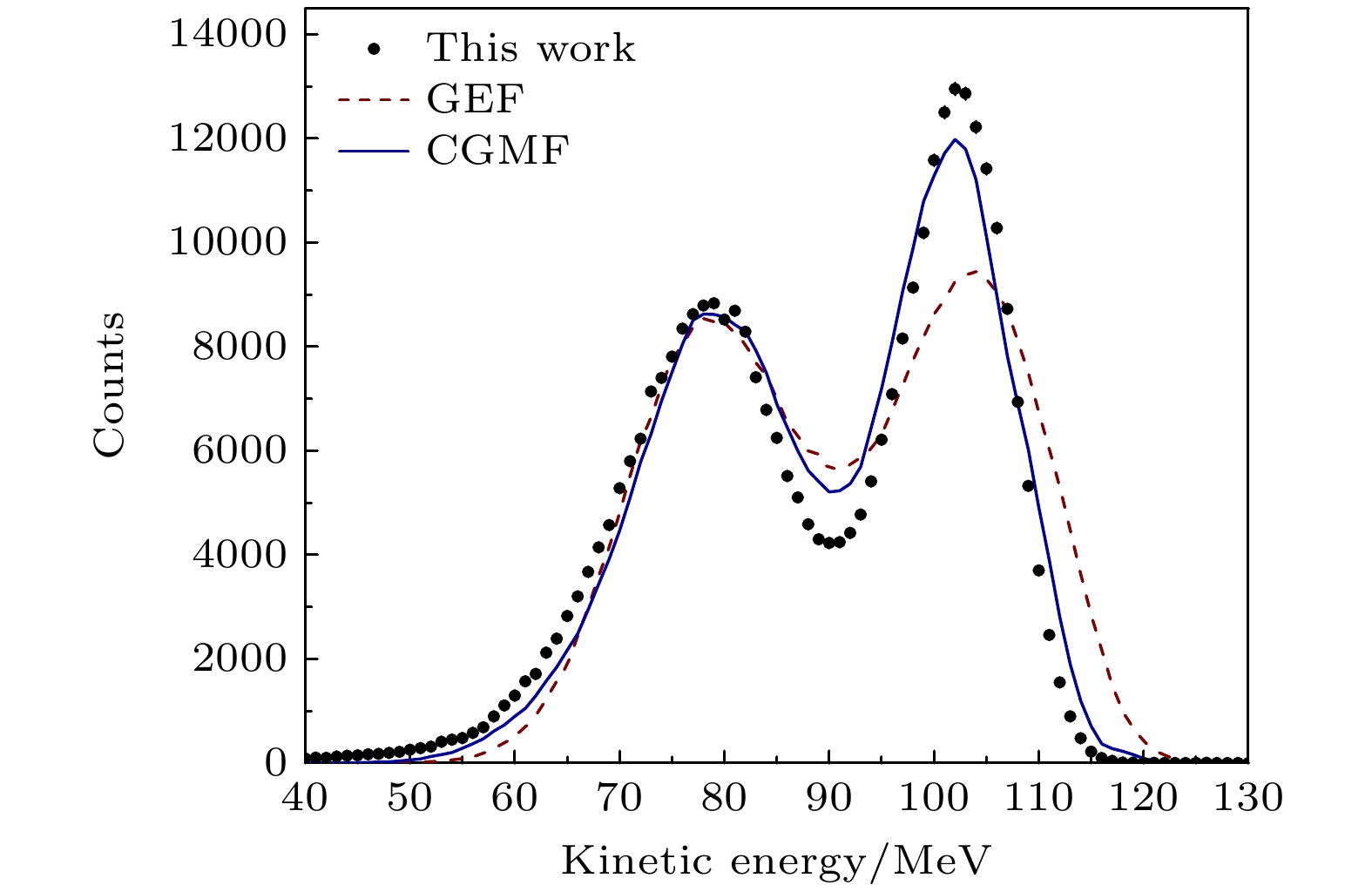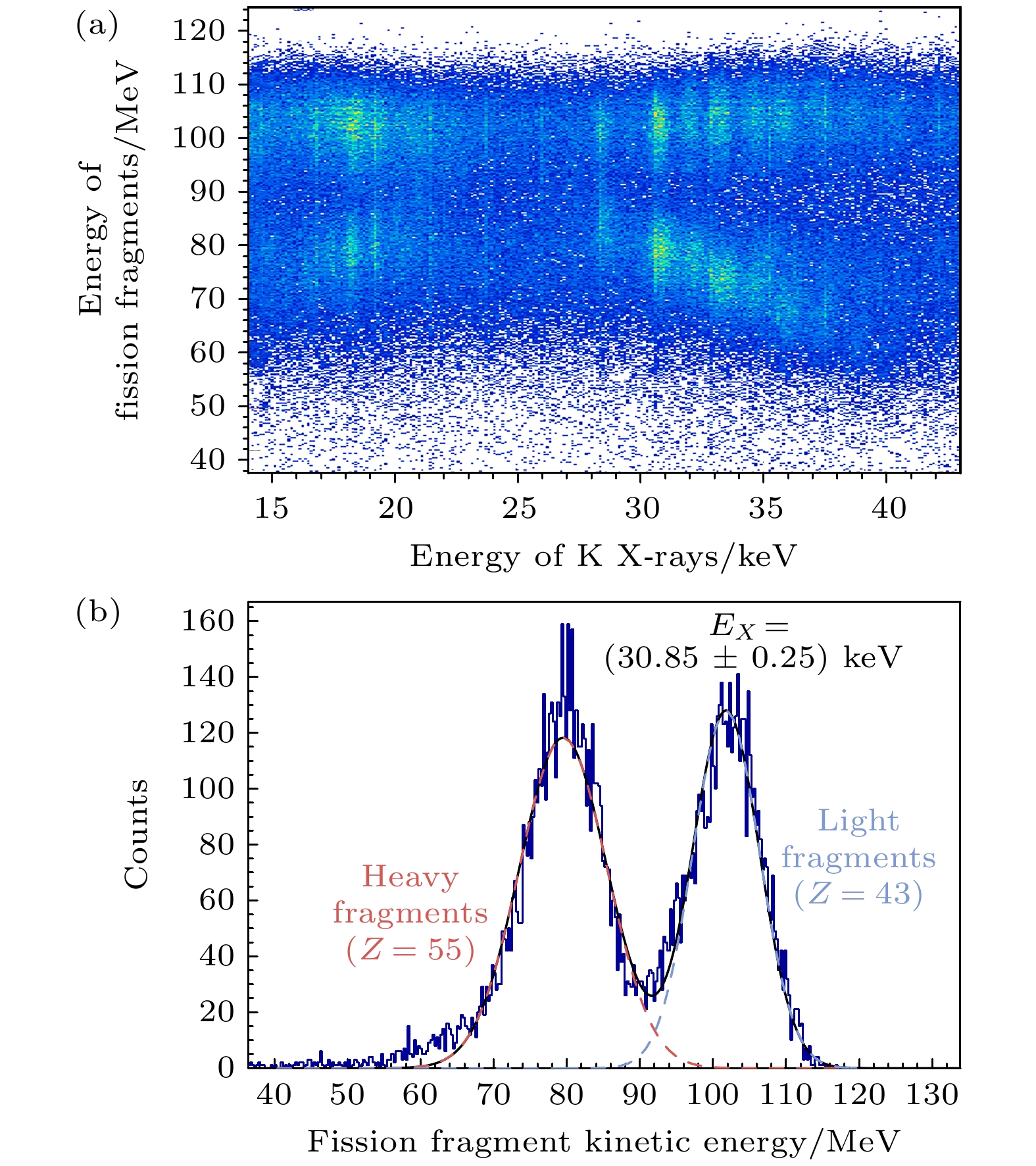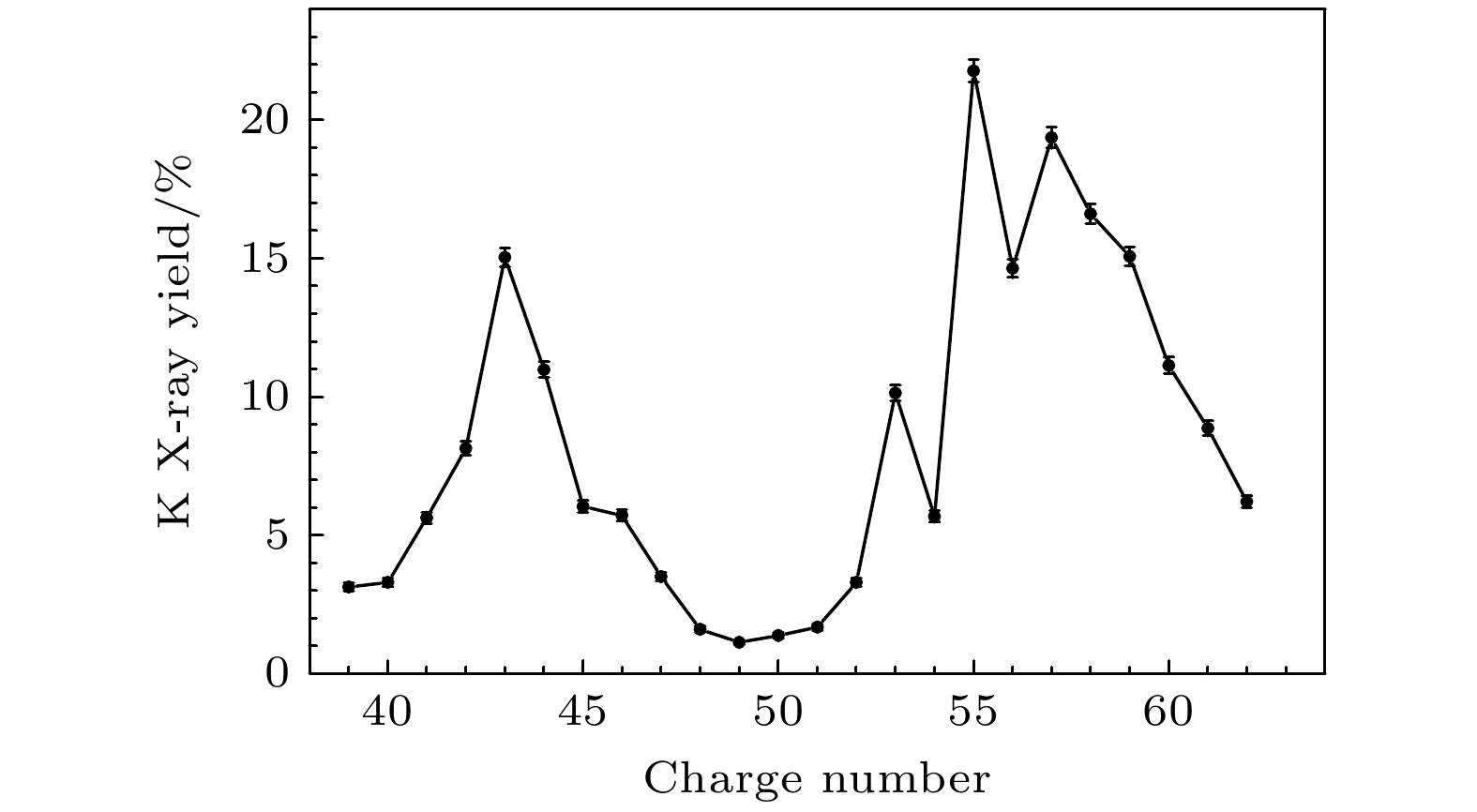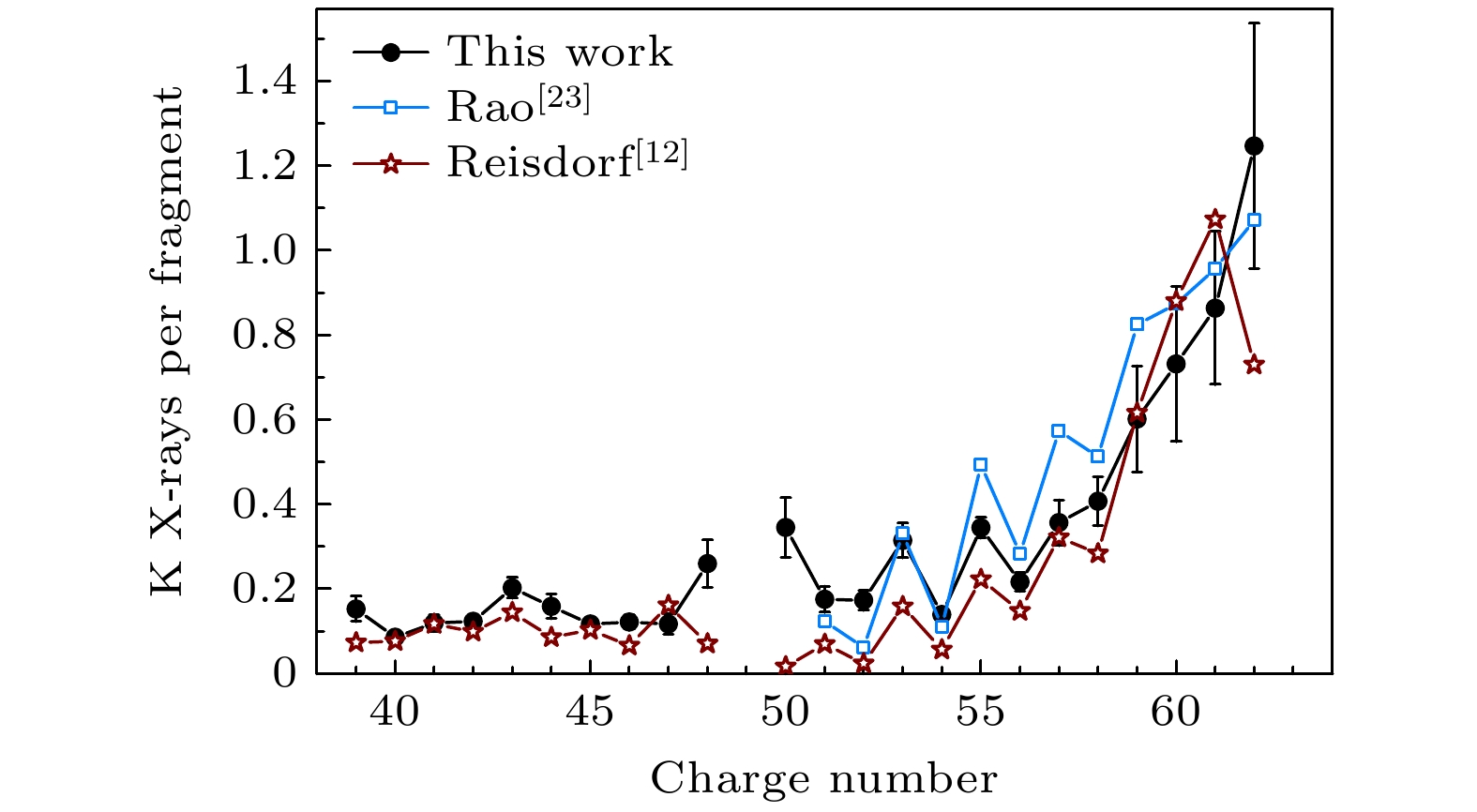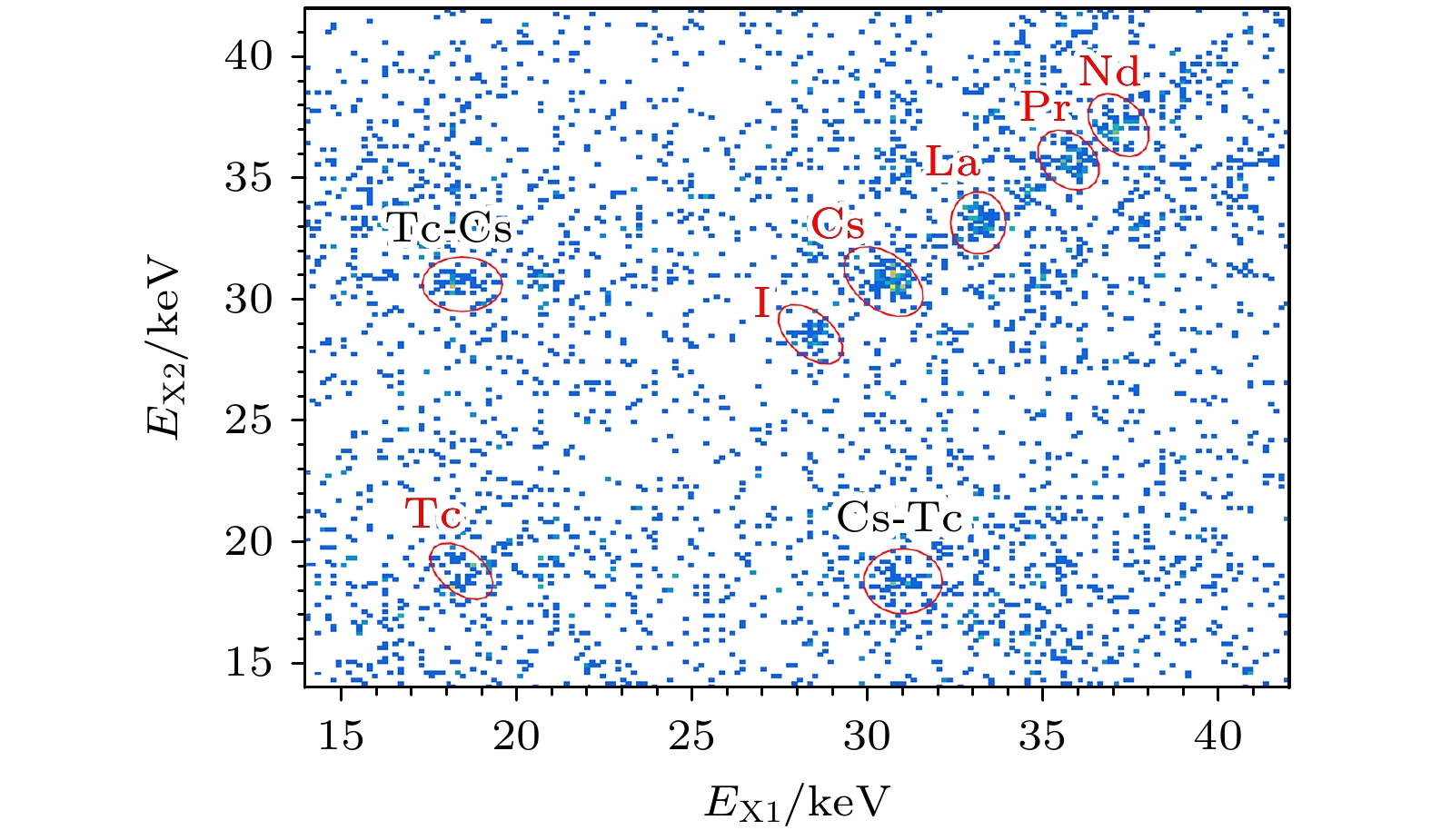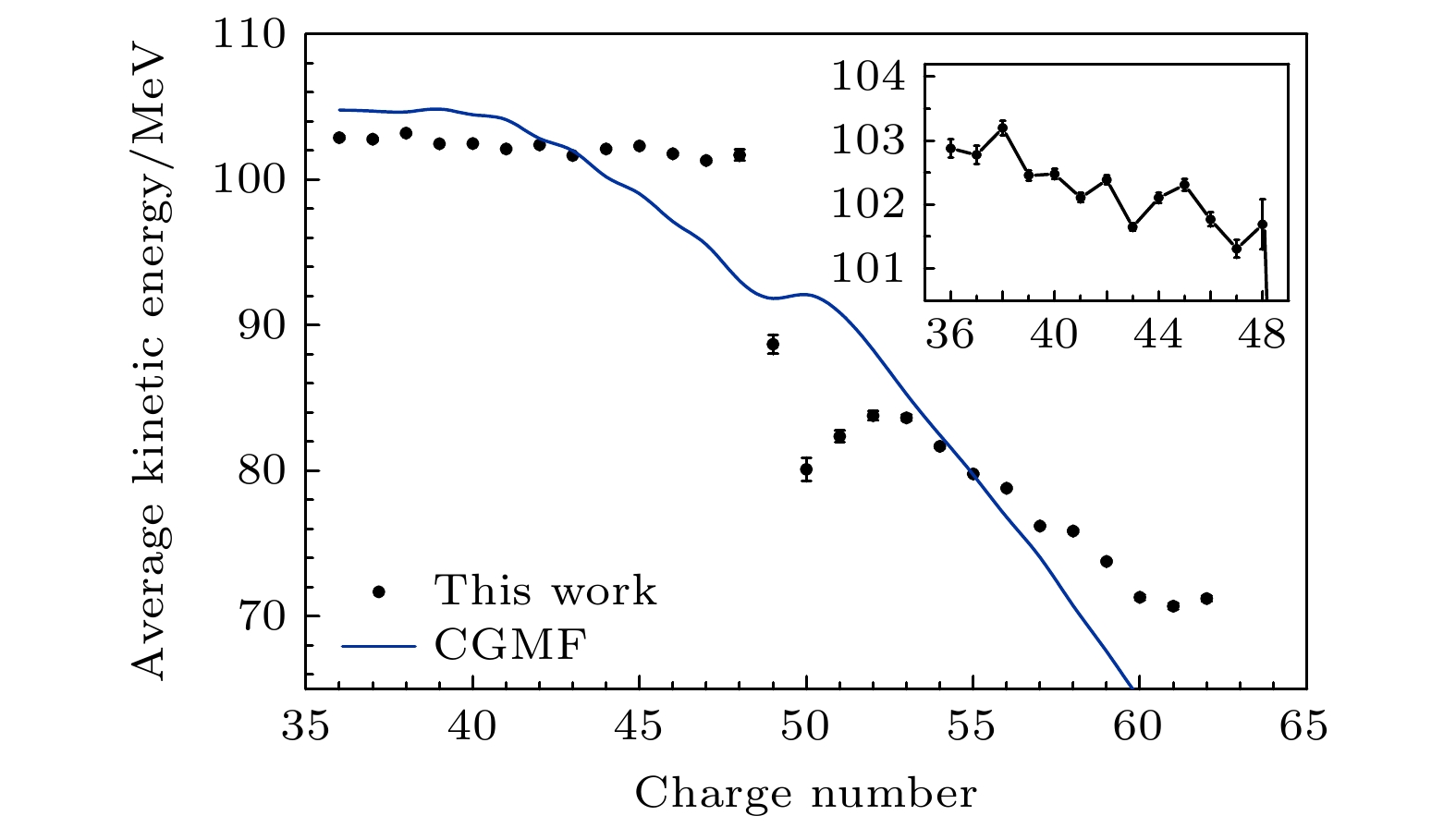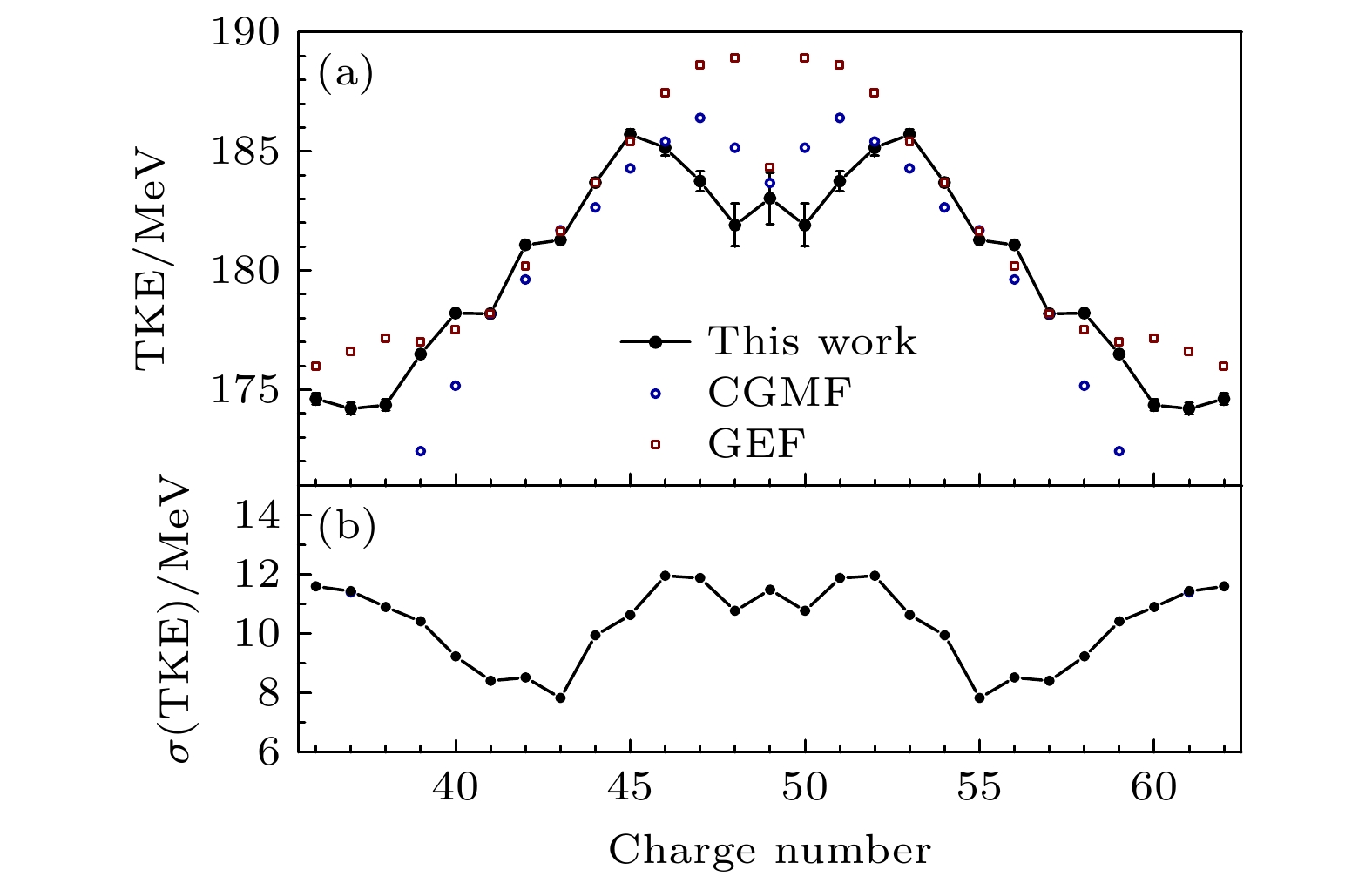-
Experimental study of physical quantities after fission provides crucial insights into the fission process, which is an indispensable way to test the fission theory. The characteristics of primary fission products before beta decay are of great value in unraveling fission kinematics and nuclear energy applications. However, the measurement of the fragment charge has always been challenging. Multi-parameter studies related to nuclear charge remain relatively scarce. The deexcitation of the primary fission products may undergo internal conversion and is often accompanied by characteristic X-ray emissions. Therefore, the correlated measurement of fragment kinetic energy and K X-rays for 252Cf spontaneous fission is conducted. A silicon surface barrier detector is used to measure the fragment kinetic energy, while two low-energy high-pure germanium detectors are utilized for K X-ray measurement. Identification of fission fragments with Z = 39–62 is realized through characteristic K X-rays with a charge resolution of ΔZ ≈ 0.7. Fission fragment K X-ray yields exhibit a strong charge correlation, with an odd-even effect factor of about 13%. Based on K X-rays, the post-neutron-emission average kinetic energy, average total kinetic energy
$(\langle \rm TKE\rangle) $ , and its dispersion ($ {\sigma }_{{\mathrm{T}}{\mathrm{K}}{\mathrm{E}}} $ ) of fission fragments are determined each as a function of nuclear charge. The kinetic energy distribution of light fragments shows a pronounced odd-even effect, with even-Z elements exhibiting kinetic energy enhanced by about 0.48 MeV compared with odd-Z fragments. The peak of the$(\langle\rm TKE\rangle) $ distribution is nearly Z = 52–53, while the minimum of the$ {\sigma }_{{\mathrm{T}}{\mathrm{K}}{\mathrm{E}}} $ appears near Z = 56, indicating the significant influence of deformed shells in the highly asymmetric fission region. The post-neutron kinetic energy distribution of fission fragments from 252Cf (sf) is calculated by using the GEF model and CGMF model. The CGMF model effectively reproduces the overall trend of kinetic energy as a function of charge number, while the results of the GEF calculation are systematically higher than the experimental values. Nonetheless, these two phenomenological models make it difficult to quantitatively describe the kinetic energy distribution of fission fragments accurately. In this study, the insights into K X-ray emissions and kinetic energy-nuclear charge relationships provide valuable reference data for independently measuring the fission yields and verifying the theoretical models of fission.-
Keywords:
- fission fragment /
- K X-ray /
- nuclear charge identification /
- fragment kinetic energy
[1] Lemaître J F, Goriely S, Hilaire S, Sida J L 2019 Phys. Rev. C 99 034612
 Google Scholar
Google Scholar
[2] Talou P, Stetcu I, Jaffke P, Rising M E, Lovell A E, Kawano T 2021 Comput. Phys. Commun. 269 108087
 Google Scholar
Google Scholar
[3] Scamps G, Simenel C 2018 Nature 564 382
 Google Scholar
Google Scholar
[4] Caamaño M, Farget F, Delaune O, Schmidt K H, Schmitt C, Audouin L, Bacri C O, Benlliure J, Casarejos E, Derkx X, Fernández-Domínguez B, Gaudefroy L, Golabek C, Jurado B, Lemasson A, Ramos D, Rodríguez-Tajes C, Roger T, Shrivastava A 2015 Phys. Rev. C 92 034606
 Google Scholar
Google Scholar
[5] Mariolopoulos G, Hamelin C, Blachot J, Bocquet J P, Brissot R, Crançon J, Nifenecker H, Ristori C 1981 Nucl. Phys. A 361 213
 Google Scholar
Google Scholar
[6] Lang W, Clerc H G, Wohlfarth H, Schrader H, Schmidt K H 1980 Nucl. Phys. A 345 34
 Google Scholar
Google Scholar
[7] Wang T F, Li G W, Zhu L P, Hen O, Zhang G L, Meng Q H, Wang L M, Han H Y, Xia H H 2017 Phys. Rev. C 96 034611
 Google Scholar
Google Scholar
[8] Knitter H H, Hambsch F J, Budtz-Jørgensen C 1992 Nucl. Phys. A 536 221
 Google Scholar
Google Scholar
[9] Boucheneb N, Asghar M, Barreau G, Doan T P, Leroux B, Sicre A, Geltenbort P, Oed A 1991 Nucl. Phys. A 535 77
 Google Scholar
Google Scholar
[10] Glendenin L E, Griffin H C 1965 Phys. Lett. 15 153
 Google Scholar
Google Scholar
[11] Kapoor S S, Bowman H R, Thompson S G 1965 Phys. Rev. 140 B1310
 Google Scholar
Google Scholar
[12] Reisdorf W, Unik J P, Griffin H C, Glendenin L E 1971 Nucl. Phys. A 177 337
 Google Scholar
Google Scholar
[13] Griffin H C 1990 J. Radioanal. Nucl. Chem. 142 279
 Google Scholar
Google Scholar
[14] Liu S L, Yang Y, Li X, Jiang W G, Han H Y, Zhang C L 2017 At. Energy Sci. Technol. 51 343 (in chinese) [刘世龙, 杨毅, 李霞, 姜文刚, 韩洪银, 张春利 2017 原子能科学技术 51 343]
 Google Scholar
Google Scholar
Liu S L, Yang Y, Li X, Jiang W G, Han H Y, Zhang C L 2017 At. Energy Sci. Technol. 51 343 (in chinese)
 Google Scholar
Google Scholar
[15] Algutifan N J, Sherman S R, Alexander C W 2015 Appl. Radiat. Isot. 96 135
 Google Scholar
Google Scholar
[16] Bé M M, Chechev V P, Dersch R, Helene O A, Helmer R G, Herman M, Hlaváč S, Marcinkowski A, Molnár G L, Nichols A L, Schönfeld E, Vanin V R, Woods M J 2007 Update of X-ray and Gamma-ray Decay Data Standards for Detector Calibration and Other Applications (Vol. 2) (Vienna: IAEA) p50
[17] Tovesson F, Hambsch F J, Oberstedt S, Bax H 2002 J. Nucl. Sci. Technol. 39 673
[18] Schmitt H W, Kiker W E, Williams C W 1965 Phys. Rev. 137 B837
 Google Scholar
Google Scholar
[19] Weissenberger E, Geltenbort P, Oed A, Gönnenwein F, Faust H 1986 Nucl. Instrum. Methods A 248 506
 Google Scholar
Google Scholar
[20] Waldo R W, Karam R A, Meyer R A 1981 Phys. Rev. C 23 1113
 Google Scholar
Google Scholar
[21] Schmidt K H, Jurado B, Amouroux C, Schmitt C 2016 Nucl. Data Sheets 131 107
 Google Scholar
Google Scholar
[22] Henschel H, Kohnle A, Hipp H, Gönnenwein G 1981 Nucl. Instrum. Methods 190 125
 Google Scholar
Google Scholar
[23] Rao M N, Biswas D C, Choudhury R K 1990 Nucl. Instrum. Methods B 51 102
 Google Scholar
Google Scholar
[24] Brown D A, Chadwick M B, Capote R, et al. 2018 Nucl. Data Sheets 148 1
 Google Scholar
Google Scholar
[25] Dolce S R, Gibson W M, Thomas T D 1969 Phys. Rev. 180 1177
 Google Scholar
Google Scholar
[26] Glendenin L E, Unik J P 1965 Phys. Rev. 140 B1301
 Google Scholar
Google Scholar
[27] Hopkins F F, White J R, Phillips G W, Moore C F, Richard P 1972 Phys. Rev. C 5 1015
 Google Scholar
Google Scholar
[28] Laurent R S, Phillips G W, Richard P, Moore C F 1971 Phys. Rev. C 4 1948
 Google Scholar
Google Scholar
[29] Hambsch F J, Oberstedt S 1997 Nucl. Phys. A 617 347
 Google Scholar
Google Scholar
[30] Böckstiegel C, Steinhäuser S, Schmidt K H, Clerc H G, Grewe A, Heinz A, de Jong M, Junghans A R, Müller J, Voss B 2008 Nucl. Phys. A 802 12
 Google Scholar
Google Scholar
[31] Chemey A, Pica A, Yao L, Loveland W, Lee H Y, Kuvin S A 2020 Eur. Phys. J. A 56 1
 Google Scholar
Google Scholar
-
表 1 252Cf自发裂变的平均动能和平均总动能
Table 1. Average kinetic energy and average total kinetic energy of fission fragments for 252Cf (sf).
-
[1] Lemaître J F, Goriely S, Hilaire S, Sida J L 2019 Phys. Rev. C 99 034612
 Google Scholar
Google Scholar
[2] Talou P, Stetcu I, Jaffke P, Rising M E, Lovell A E, Kawano T 2021 Comput. Phys. Commun. 269 108087
 Google Scholar
Google Scholar
[3] Scamps G, Simenel C 2018 Nature 564 382
 Google Scholar
Google Scholar
[4] Caamaño M, Farget F, Delaune O, Schmidt K H, Schmitt C, Audouin L, Bacri C O, Benlliure J, Casarejos E, Derkx X, Fernández-Domínguez B, Gaudefroy L, Golabek C, Jurado B, Lemasson A, Ramos D, Rodríguez-Tajes C, Roger T, Shrivastava A 2015 Phys. Rev. C 92 034606
 Google Scholar
Google Scholar
[5] Mariolopoulos G, Hamelin C, Blachot J, Bocquet J P, Brissot R, Crançon J, Nifenecker H, Ristori C 1981 Nucl. Phys. A 361 213
 Google Scholar
Google Scholar
[6] Lang W, Clerc H G, Wohlfarth H, Schrader H, Schmidt K H 1980 Nucl. Phys. A 345 34
 Google Scholar
Google Scholar
[7] Wang T F, Li G W, Zhu L P, Hen O, Zhang G L, Meng Q H, Wang L M, Han H Y, Xia H H 2017 Phys. Rev. C 96 034611
 Google Scholar
Google Scholar
[8] Knitter H H, Hambsch F J, Budtz-Jørgensen C 1992 Nucl. Phys. A 536 221
 Google Scholar
Google Scholar
[9] Boucheneb N, Asghar M, Barreau G, Doan T P, Leroux B, Sicre A, Geltenbort P, Oed A 1991 Nucl. Phys. A 535 77
 Google Scholar
Google Scholar
[10] Glendenin L E, Griffin H C 1965 Phys. Lett. 15 153
 Google Scholar
Google Scholar
[11] Kapoor S S, Bowman H R, Thompson S G 1965 Phys. Rev. 140 B1310
 Google Scholar
Google Scholar
[12] Reisdorf W, Unik J P, Griffin H C, Glendenin L E 1971 Nucl. Phys. A 177 337
 Google Scholar
Google Scholar
[13] Griffin H C 1990 J. Radioanal. Nucl. Chem. 142 279
 Google Scholar
Google Scholar
[14] Liu S L, Yang Y, Li X, Jiang W G, Han H Y, Zhang C L 2017 At. Energy Sci. Technol. 51 343 (in chinese) [刘世龙, 杨毅, 李霞, 姜文刚, 韩洪银, 张春利 2017 原子能科学技术 51 343]
 Google Scholar
Google Scholar
Liu S L, Yang Y, Li X, Jiang W G, Han H Y, Zhang C L 2017 At. Energy Sci. Technol. 51 343 (in chinese)
 Google Scholar
Google Scholar
[15] Algutifan N J, Sherman S R, Alexander C W 2015 Appl. Radiat. Isot. 96 135
 Google Scholar
Google Scholar
[16] Bé M M, Chechev V P, Dersch R, Helene O A, Helmer R G, Herman M, Hlaváč S, Marcinkowski A, Molnár G L, Nichols A L, Schönfeld E, Vanin V R, Woods M J 2007 Update of X-ray and Gamma-ray Decay Data Standards for Detector Calibration and Other Applications (Vol. 2) (Vienna: IAEA) p50
[17] Tovesson F, Hambsch F J, Oberstedt S, Bax H 2002 J. Nucl. Sci. Technol. 39 673
[18] Schmitt H W, Kiker W E, Williams C W 1965 Phys. Rev. 137 B837
 Google Scholar
Google Scholar
[19] Weissenberger E, Geltenbort P, Oed A, Gönnenwein F, Faust H 1986 Nucl. Instrum. Methods A 248 506
 Google Scholar
Google Scholar
[20] Waldo R W, Karam R A, Meyer R A 1981 Phys. Rev. C 23 1113
 Google Scholar
Google Scholar
[21] Schmidt K H, Jurado B, Amouroux C, Schmitt C 2016 Nucl. Data Sheets 131 107
 Google Scholar
Google Scholar
[22] Henschel H, Kohnle A, Hipp H, Gönnenwein G 1981 Nucl. Instrum. Methods 190 125
 Google Scholar
Google Scholar
[23] Rao M N, Biswas D C, Choudhury R K 1990 Nucl. Instrum. Methods B 51 102
 Google Scholar
Google Scholar
[24] Brown D A, Chadwick M B, Capote R, et al. 2018 Nucl. Data Sheets 148 1
 Google Scholar
Google Scholar
[25] Dolce S R, Gibson W M, Thomas T D 1969 Phys. Rev. 180 1177
 Google Scholar
Google Scholar
[26] Glendenin L E, Unik J P 1965 Phys. Rev. 140 B1301
 Google Scholar
Google Scholar
[27] Hopkins F F, White J R, Phillips G W, Moore C F, Richard P 1972 Phys. Rev. C 5 1015
 Google Scholar
Google Scholar
[28] Laurent R S, Phillips G W, Richard P, Moore C F 1971 Phys. Rev. C 4 1948
 Google Scholar
Google Scholar
[29] Hambsch F J, Oberstedt S 1997 Nucl. Phys. A 617 347
 Google Scholar
Google Scholar
[30] Böckstiegel C, Steinhäuser S, Schmidt K H, Clerc H G, Grewe A, Heinz A, de Jong M, Junghans A R, Müller J, Voss B 2008 Nucl. Phys. A 802 12
 Google Scholar
Google Scholar
[31] Chemey A, Pica A, Yao L, Loveland W, Lee H Y, Kuvin S A 2020 Eur. Phys. J. A 56 1
 Google Scholar
Google Scholar
Catalog
Metrics
- Abstract views: 4231
- PDF Downloads: 257
- Cited By: 0

















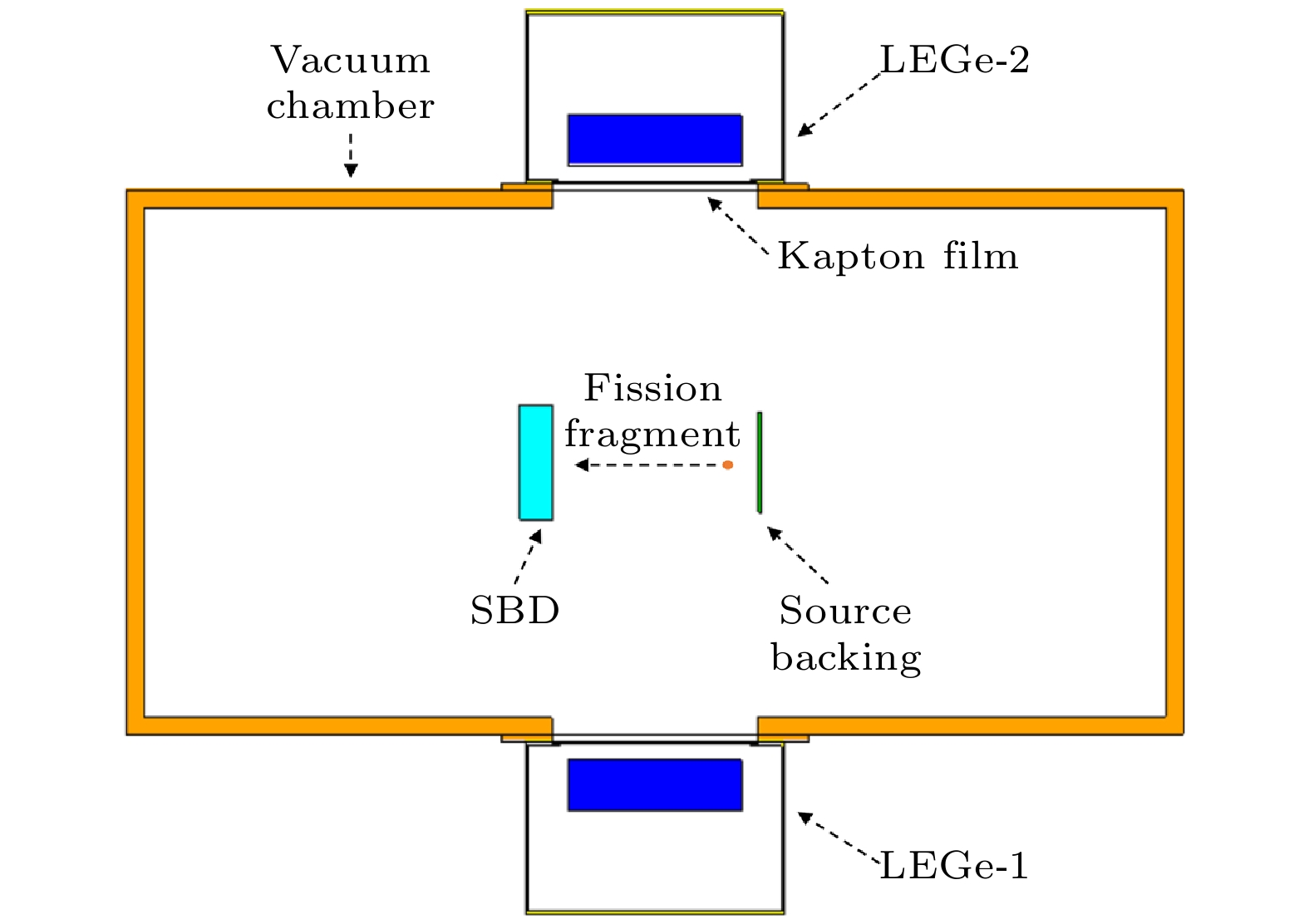
 DownLoad:
DownLoad:
